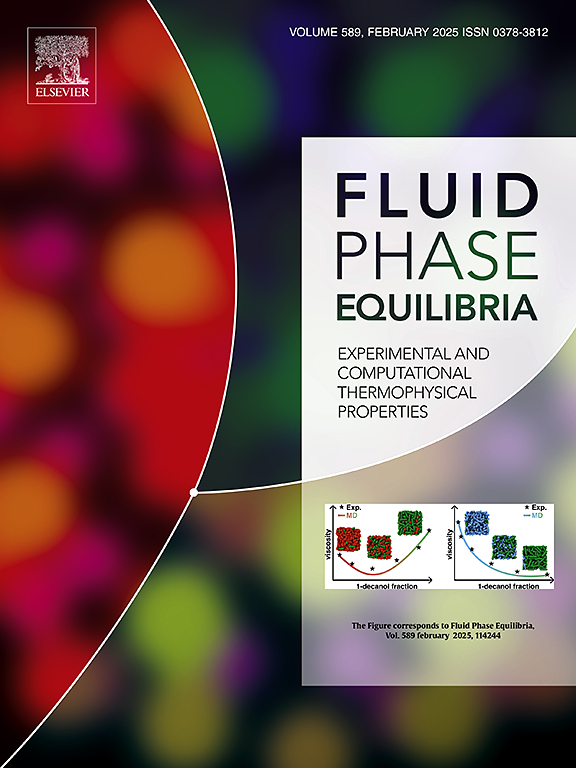Molecular thermodynamics of complex coacervate systems. Part I: Modeling of polyelectrolyte solutions using pePC-SAFT
IF 2.8
3区 工程技术
Q3 CHEMISTRY, PHYSICAL
引用次数: 0
Abstract
Rigorous molecular modeling of polyelectrolyte solutions is complicated by several intrinsic challenges of those systems, such as the strong charge correlation and the complex cocktail of short-range and long-range interactions, which span over a broad length scale. On the other hand, there is an increasing interest in understanding and designing polyelectrolyte systems in biology, life science, medicine, and (bio)chemical engineering. Thermodynamics of polyelectrolyte solutions is rather underexplored, and the difficulties in describing polyelectrolytes at the molecular level as well as the lack and the uncertainty of experimental data might have hindered the development of accurate thermodynamic models for polyelectrolytes. In this work, the main phenomena of counterion condensation, complex formation and coacervate formation are discussed and considered for the further development of polyelectrolyte PC-SAFT (pePC-SAFT) as modeling framework in this work. The new development was then validated using experimental osmotic coefficients of aqueous polyelectrolyte solutions. Finally, liquid-liquid phase separation (LLPS) of complex coacervate systems (aqueous solutions containing oppositely charged polyions) were modeled with pePC-SAFT, and the results were in very good agreement with literature data.
求助全文
约1分钟内获得全文
求助全文
来源期刊

Fluid Phase Equilibria
工程技术-工程:化工
CiteScore
5.30
自引率
15.40%
发文量
223
审稿时长
53 days
期刊介绍:
Fluid Phase Equilibria publishes high-quality papers dealing with experimental, theoretical, and applied research related to equilibrium and transport properties of fluids, solids, and interfaces. Subjects of interest include physical/phase and chemical equilibria; equilibrium and nonequilibrium thermophysical properties; fundamental thermodynamic relations; and stability. The systems central to the journal include pure substances and mixtures of organic and inorganic materials, including polymers, biochemicals, and surfactants with sufficient characterization of composition and purity for the results to be reproduced. Alloys are of interest only when thermodynamic studies are included, purely material studies will not be considered. In all cases, authors are expected to provide physical or chemical interpretations of the results.
Experimental research can include measurements under all conditions of temperature, pressure, and composition, including critical and supercritical. Measurements are to be associated with systems and conditions of fundamental or applied interest, and may not be only a collection of routine data, such as physical property or solubility measurements at limited pressures and temperatures close to ambient, or surfactant studies focussed strictly on micellisation or micelle structure. Papers reporting common data must be accompanied by new physical insights and/or contemporary or new theory or techniques.
 求助内容:
求助内容: 应助结果提醒方式:
应助结果提醒方式:


